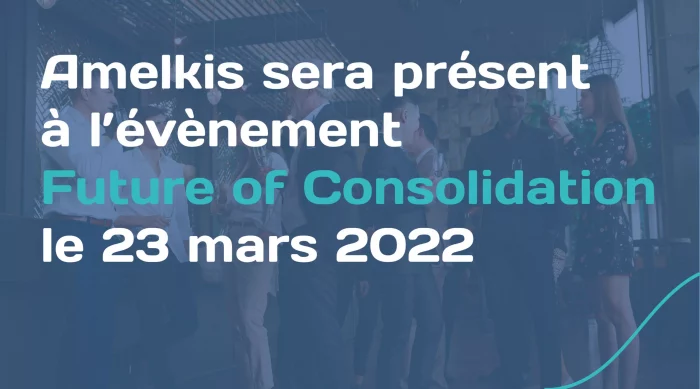Amelkis organized the XBRL Digital Event on Tuesday, April 28th. More than 120 CFOs participated in this event.
See the replay by clicking here …
Here are some excerpts from the different interventions
Mathieu Floquet, Project Manager, Accounting Standards Authority
In particular, Mathieu recalled the position of the ANC and the timetable for the application of the standard. He also presented the results of the academic study carried out with the support of ANC whose author is Pierre Teller, Senior Lecturer at the IAE of the Universitý Nice. In particular, this study compares USGAPP and IFRS tagging in terms of the number of tags and the number of extensions (link to the study). Mathieu also presented the two new recommendations of the ANC; one concerning the presentation of financial statements and the other concerning the mapping of financial statements in XBRL. Finally, he answered questions about the evolution of the taxonomy within the framework of the Primary Financial Statement project.
Thomas Verdin, BM&A Director UK Administrator XBRL Europe
In particular, Thomas explained the mapping issues by distinguishing between simple mapping, which is largely based on the ANC recommendations, and complex mapping, which consists of looking for all situations where the issuer has chosen to customize the presentation of its accounts. Thomas also reminded us that the issue is not only a question of tags, it is also necessary to be comparable to the choice of place. He also addressed the whole issue of attributes (sign, scale, inking rules) and macro tagging of schedules.
Nawfal Yassir, Amelkis Partner
Nawfal presented the Amelkis XBRL application and the two possible approaches, namely the conversion of an existing document or the design of an online document. He presented a concrete case of conversion of a PDF reference document to HTML. He performed the tagging of primary statements and in particular of the change in equity which involves two axes. Nawfal insisted on the importance of being able to define criteria in the taxonomy in order to make the tagging very fast. He also demonstrated that it was possible to generate an Inline XBRL document without any loss of graphic quality. Finally, he presented the “conformance suite” module which allows to guarantee the conformity of the issuer’s XBRL report with the ESMA specifications.
Laurent Rouyres, President of Labrador
Laurent presented the impacts of XBRL on financial communication, notably by making the information much more comparable. He specified that for the moment it was a simple compliance of the primary statements but that it was only a start. He recalled its great potential in terms of business information and that it was a real digital revolution. He also shared his vision of the market in terms of the technical solutions proposed. He felt that the market was much healthier than it was in the U.S. 8 years ago when XBRL was launched. He indicated that the vast majority of issuers will retain a PDF to Inline XBRL conversion solution for this first year of implementation. Beyond that time, he believes that full HTML platforms are the way of the future, but that we should be very careful with these tools. He concluded by stating that XBRL represents a significant value creation potential for issuers. Investors and analysts will have access to much more interactive information and advanced scoring capabilities.
Stéphanie Prangé, Corporate Financial Reports SANOFI
Stephanie presented SANOFI’s XBRL project since the launch in March 2017 when the US authorities imposed this format. She presented all the steps of the project: creation of the teams, information research and implementation of a tool. She said that at the time, she had not had the chance to have this type of conference and had to be accompanied to integrate all this terminology and carry out the mapping. She said that the first year, tagging was outsourced because the group’s disclosure management tool at the time did not allow it to be done in-house. She described all the difficulties that arose and advised the groups not to underestimate the learning curve associated with this technique. Coaching was fundamental to the success of this project. She reminded us that the scope of the American standards was much broader than in Europe, since it was necessary to tag all of the encrypted data and not just the primary reports; that is, more than 5,000 tags, which is enormous in terms of volume. Stéphanie finally presented all the changes that were made afterwards to internalize the tagging and review the entire process to shorten and simplify all the steps.
Amelkis thanks all participants and speakers.
Amelkis will meet you on September 24th 2020, Maison de l’Alsace, Paris for the XBRL Live Event


